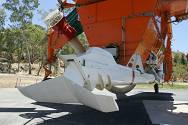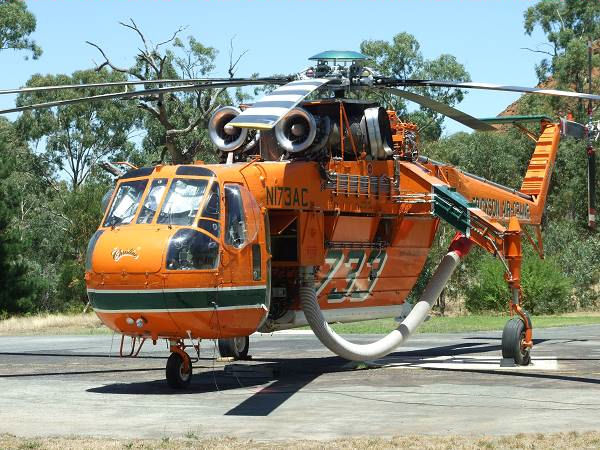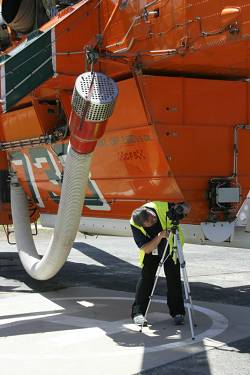
AVIATION STORY 14a ERICKSON AIR CRANE |
||||||||||||||||||||||||||||||||||||
|
Video cameras supplied by:
Air Crane @ Brukunga
|
CFS Aerial Fire Fighting SA.Pilots: Keith Gill & Bill Neckels Airfield: Brukunga CFS Base Time Frame: 8th January 2010 |
A special thanks to: CFS Media & Erickson Air Crane for their assistance with this story.
|
||||||||||||||||||||||||||||||||||
|
Erickson Air Crane at Brukunga.
Christine (733) on the helipad, Brukunga This huge machine is amazing when you first see it close up. Coming around the corner to the helipad reveals this nemesis for the first time. It's a bit of a shock as it is much bigger than it appears on our local news media/TV. Immediately jumping out the car with cameras in hand, the 5DME crew were assisted by the pilots to get some great shots for our gallery. Just talking to the pilots was of great interest in itself. Information and stories about the helicopter and the job overall were most interesting. From pre-flight checks, deployment, fill methods and bombing fires the pilots were a great source of information. The flight time of most of the Air Crane pilots exceeds 14.500 hours and the experience not only individually but between them all must be enormous. Keith and Bill (pilots) explained how they prepare for quick deployment by performing checks in the mornings around their pre-flight examinations. This allows and abbreviated check should the aircraft be called to a fire. From the time of call-out to being airborne is 15 minutes. Keith and Bill also informed us that modifications have been made over the years to streamline operations and enhance the helicopter. For instance the Sea Snorkel that is used to fill the tank with sea water, was added to reduce corrosion damage to the helicopter by sea spray. When hovering over the ocean, filling the tank with the Pond Snorkel, sea spray may be ingested into the turbines and can also cause excessive corrosion to the airframe and components. This has been reduced by the spray trailing behind the helicopter with the Sea Snorkel, as filling is performed whilst in forward motion at approximately 50kph.
Aircraft Specification
Interview Nigel Daw (5DME) talks to Keith Gill and Bill Neckels (Air Crane Pilots)
Photos from Brukunga and Woodside See the 5DME Photo Gallery for images of the aircraft mentioned in this article. Click the links to learn about each aircraft type and ATC:
Interesting Links http://www.fire-brigade.asn.au/operations/aircraft.asp#602 http://www.ericksonaircrane.com/
Credits SA Country Fire Service (CFS Media) Brukunga, Air Crane Pilots: Keith Gill & Bill Neckels Story & Audio Post Production: David H. Photos: David H & David Wilkie. Interview conducted by Nigel Daw. |
||||||||||||||||||||||||||||||||||||






